Last Updated on November 27, 2025 by JonnaJ | Published: November 2, 2017
You may already know about the Three Kings that bring children presents or the special sweets eaten this time of year. But there are plenty more Spanish Christmas traditions that aren’t as well known outside the country. Read on to find out what they are!
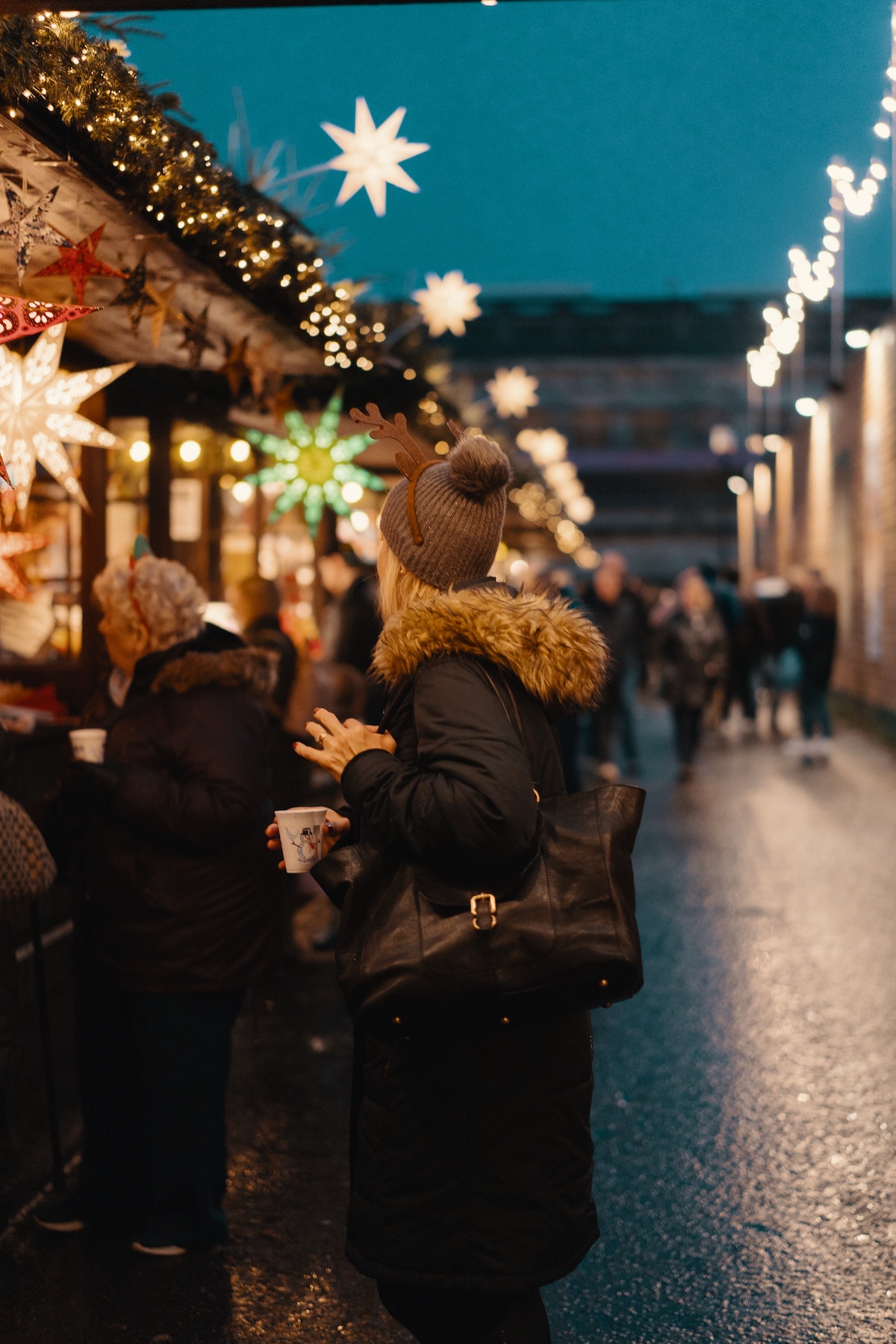
Spain during the holidays is full of festive cheer! Photo credit: Ross Sneddon
These Spanish Christmas traditions will help you make the most of the holiday season. They’re things that you’ll find locals partaking in year after year, so join the fun and celebrate!
Christmas & New Years Traditions Celebrated Throughout Spain
Holiday Lights
All of Spain’s major cities (and even most small towns) get decked out to the nines come December. The streets are filled with stunning displays of holiday lights that will take your breath away.
One of our favorite Spanish Christmas traditions is to take an evening stroll and marvel at the gorgeous illuminations. If you get cold, stop along the way for a warm and toasty snack, like castañas asadas (roasted chestnuts) from a local street vendor, or duck into a cafe for churros and hot chocolate.
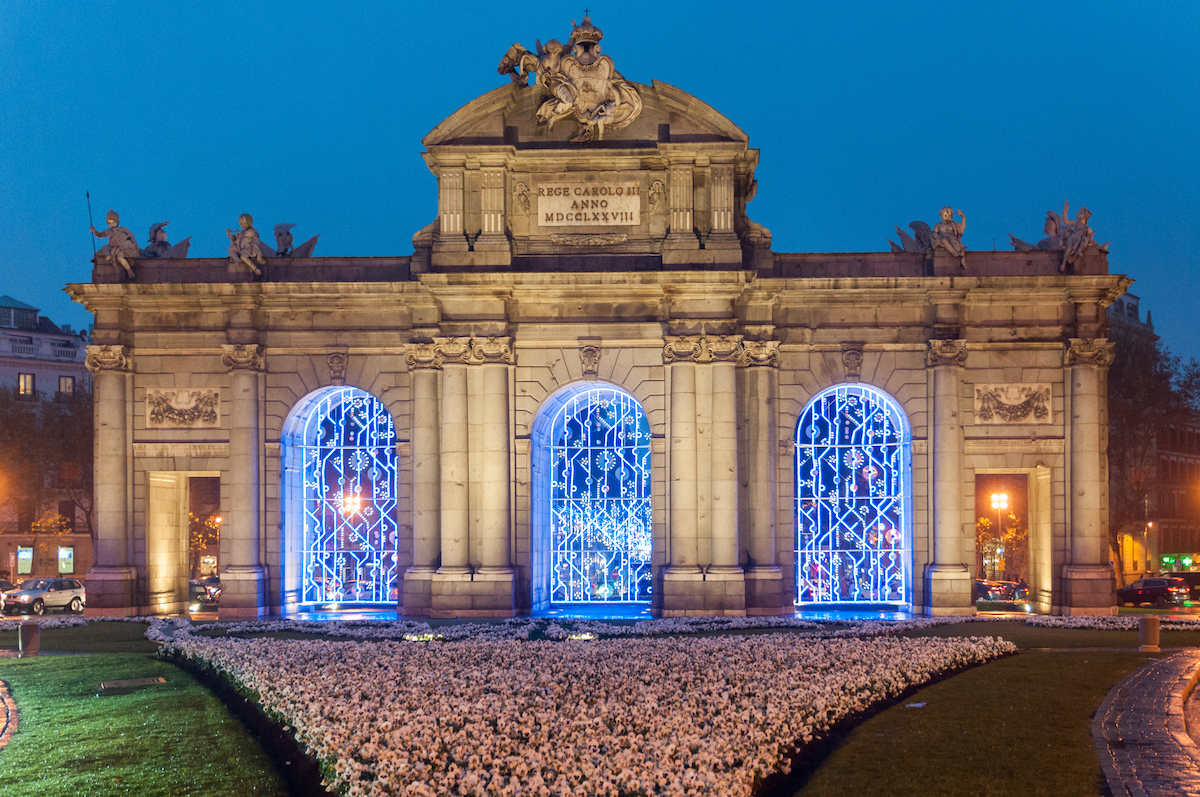
Nativity Scenes
You’ll find nativity scenes popping up just about everywhere in Spain during the Christmas season, from massive public displays to private decorations in people’s homes. But these aren’t just your standard depictions of Mary, Joseph, and the baby Jesus with a few shepherds and farm animals. Spanish nativity scenes are full-scale models of the entire town of Bethlehem on the night of the first Christmas.
The attention to detail that goes into Spanish belenes (the word belén means Bethlehem) is truly remarkable. Try to see as many as you can and pick a favorite.
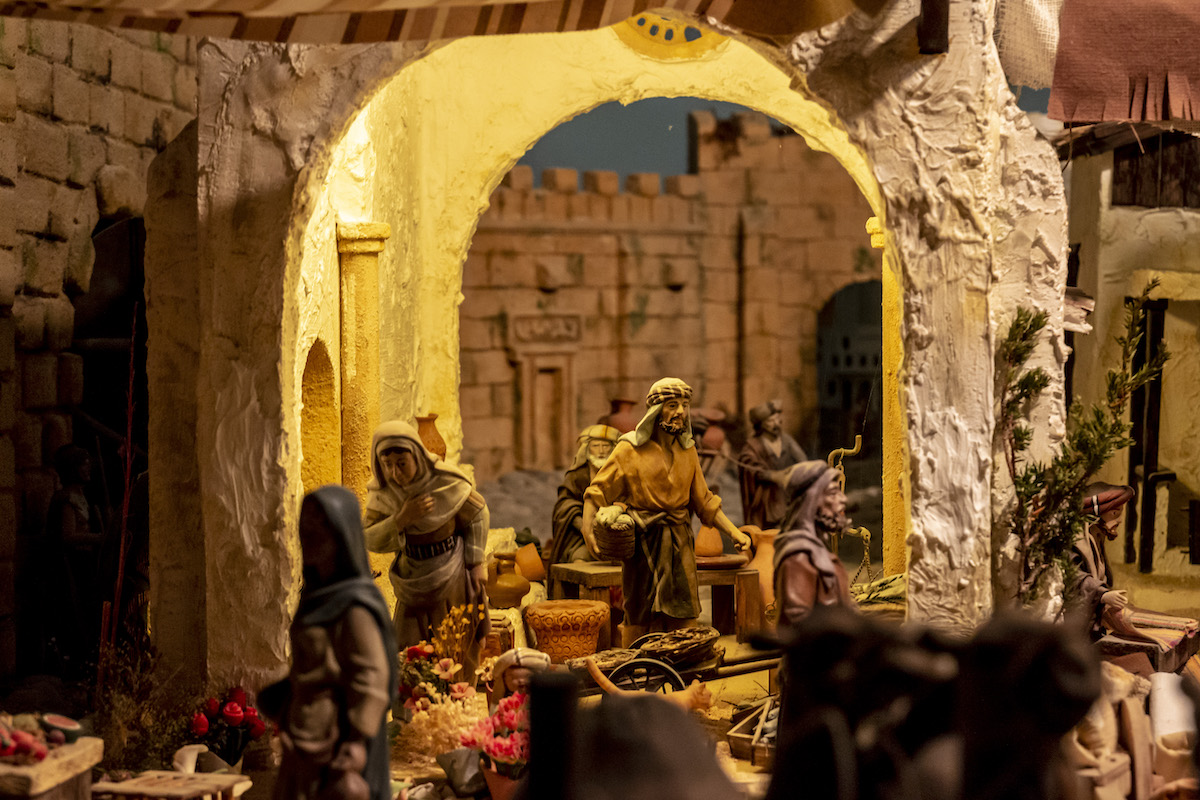
Christmas Markets
Would it really be winter in Europe without the charming Christmas markets?
Spain may not be much of a winter wonderland overall—don’t expect a white Christmas in most parts of the country. However, the picturesque holiday markets that pop up all over the country during the festive season certainly make up for the lack of snow. These are fantastic places to find one-of-a-kind holiday gifts and souvenirs for your loved ones back home.
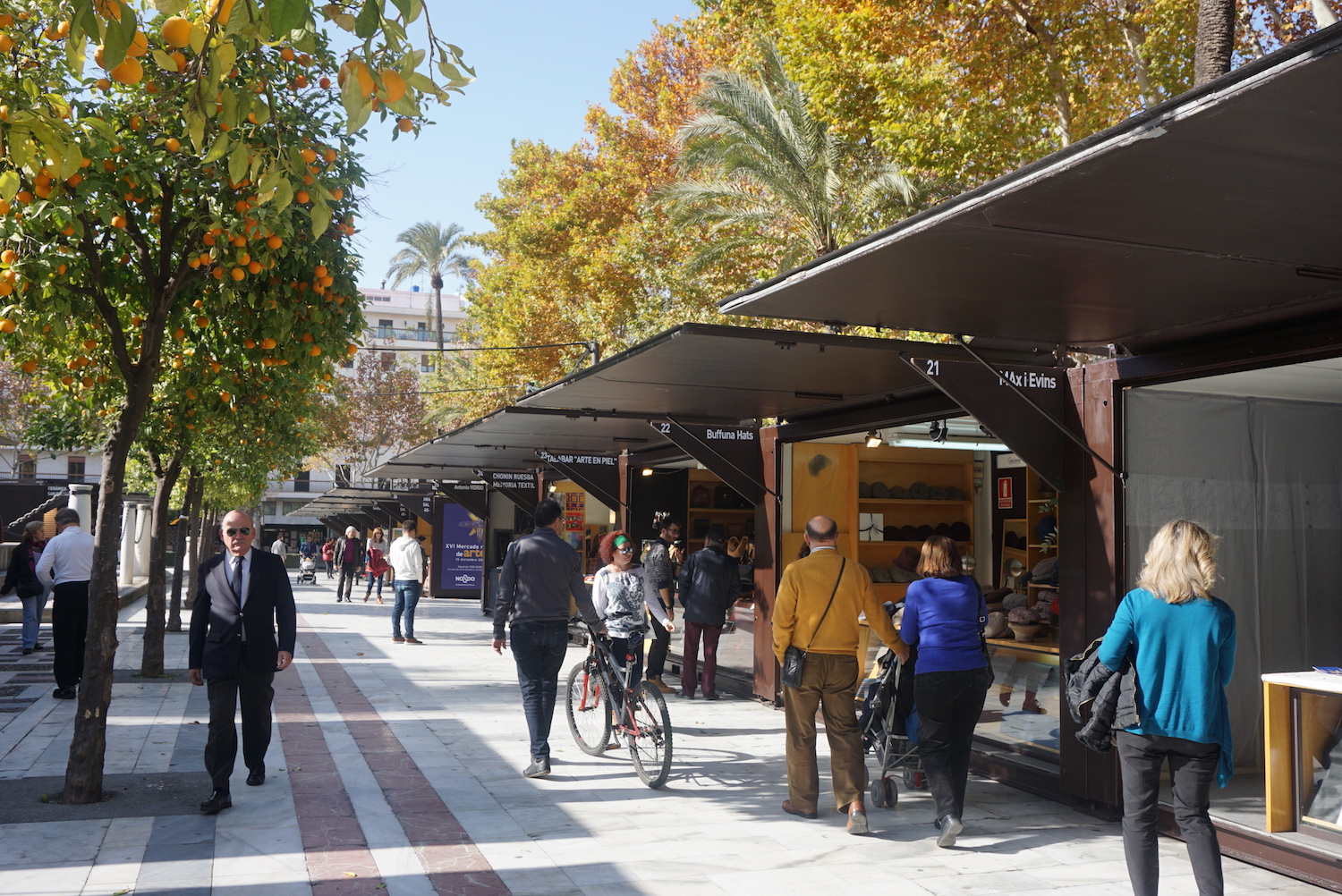
There are plenty of excellent Spanish gourmet products to choose from. Put several of them together and you’ve got the ultimate holiday present (and one of our favorite Spanish Christmas traditions): the cesta de navidad.
Cestas de navidad, or “Christmas baskets,” are simply packages overflowing with all kinds of Spanish goodies, usually of the food and beverage variety. Incredible cured meats, cheeses, olive oils, wines, sweets, and more make this the ultimate foodie gift.
Christmas baskets are a common holiday present in Spain if you want to show appreciation for someone’s hard work or effort. Some companies will give them to employees along with Christmas bonuses, or residents of an apartment building may chip in to get a cesta for the cleaning staff. If you’re staying in a Spanish family’s home during the holiday season, this is the perfect option for a host gift.
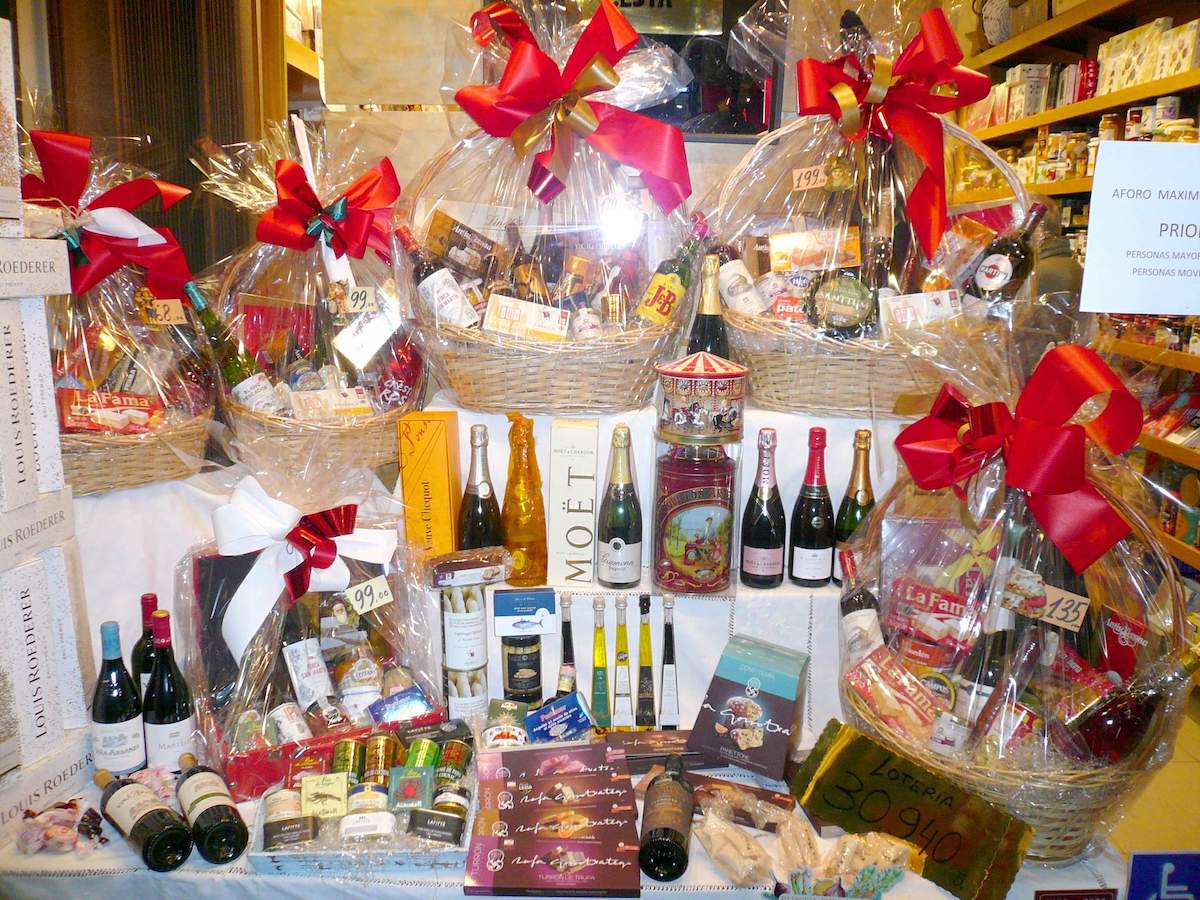
Christmas Sweets
What would the Christmas season be without something sweet to snack on?
You won’t find any candy canes or gingerbread in Spain. Here are some delicious typical Spanish Christmas sweets to keep an eye out for instead!
- Mantecados and polvorones: Crumbly shortbread cookies that come in a variety of delicious flavors
- Turrón: A nougat-based candy bar made with almonds and honey
- Tronco de navidad: Spain’s answer to the typical Yule log dessert
- Mazapán: Marzipan, which has a long history here in Spain and is often formed into intricate and colorful shapes!
- Honorable mention: churros and chocolate. While there’s really no bad time of year to enjoy them, the crispy sticks of fried-to-perfection dough and perfectly rich hot chocolate make the Christmas season especially cozy.
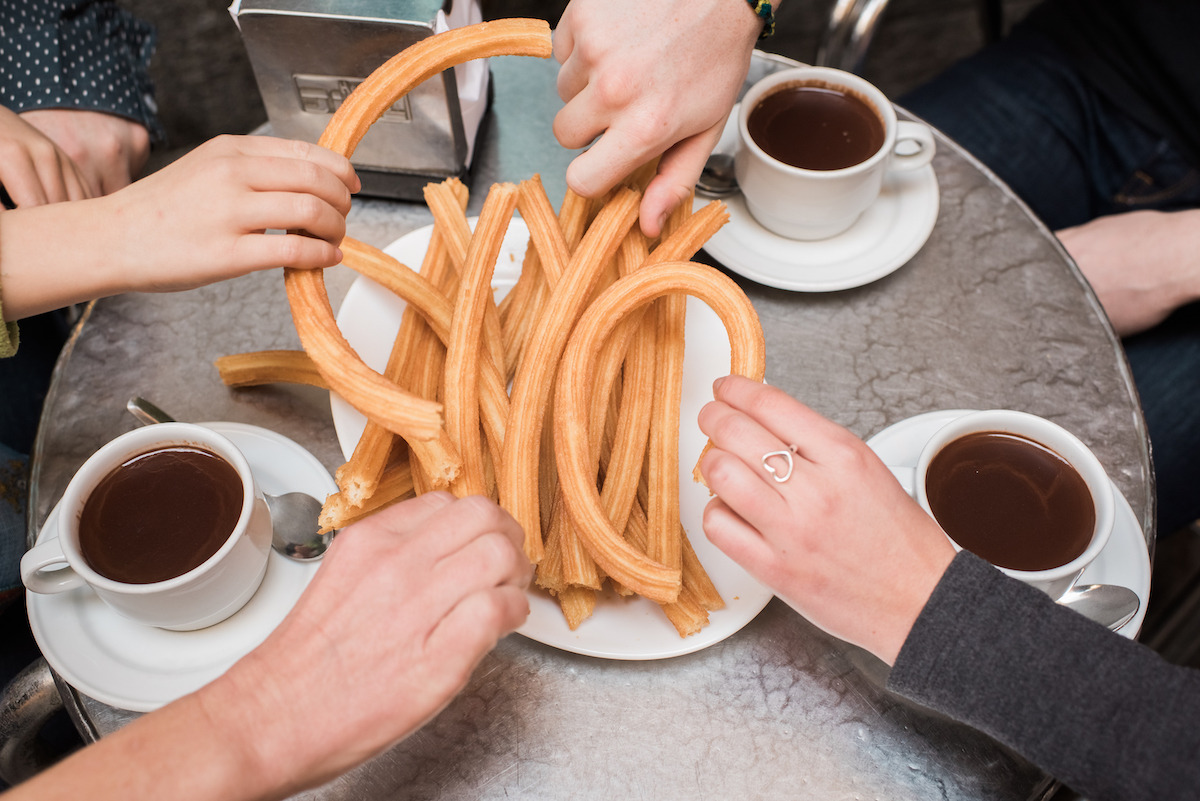
Christmas Lottery (El Gordo)
If you stop into a neighborhood bar for a cup of coffee on the morning of December 22 and see that the TV is turned to a channel featuring children singing seemingly random numbers, don’t be alarmed. They’re just announcing the winners of the Spanish Christmas lottery, one of Spain’s most important Christmas traditions.
Spain’s famous Christmas jackpot, often referred to locally as el gordo (“the fat one”), is different from most other lotteries due to the fact that the prize money is split evenly between everyone who has the same winning number. Because many families and groups of friends will often buy the same ticket number, it makes sharing the potential prize with them more fun!
Even if you didn’t have the chance to buy a lottery entry yourself, be sure to stick around for a while and watch the results show with the locals. Children from a Madrid elementary school randomly pick the winning numbers and sing them out, making for a wholesome holiday show.
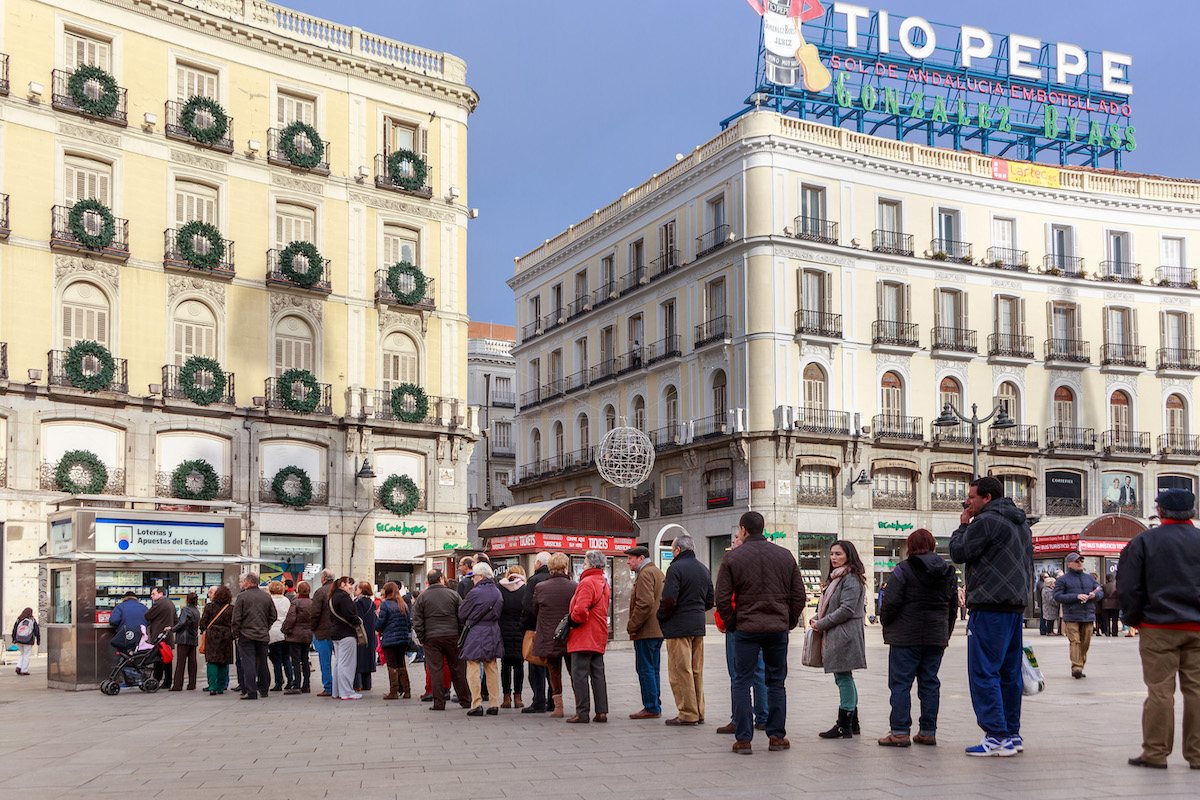
Christmas Eve & New Year’s Eve Dinner
You may have heard that lunch is the main meal of the day in Spain, and dinner is usually a much lighter affair. The holiday season, however, has a couple of exceptions to this rule.
Christmas Eve and New Year’s Eve, known as nochebuena and nochevieja respectively, both see families gathering together for massive evening meals. While the exact menu offerings vary by region as well as by family, holiday dinners usually start with a round of tapas and appetizers followed by a hearty meat or fish dish as the main. A tray of Spanish Christmas sweets will likely make an appearance after the meal, and plenty of wine will flow throughout the whole thing.
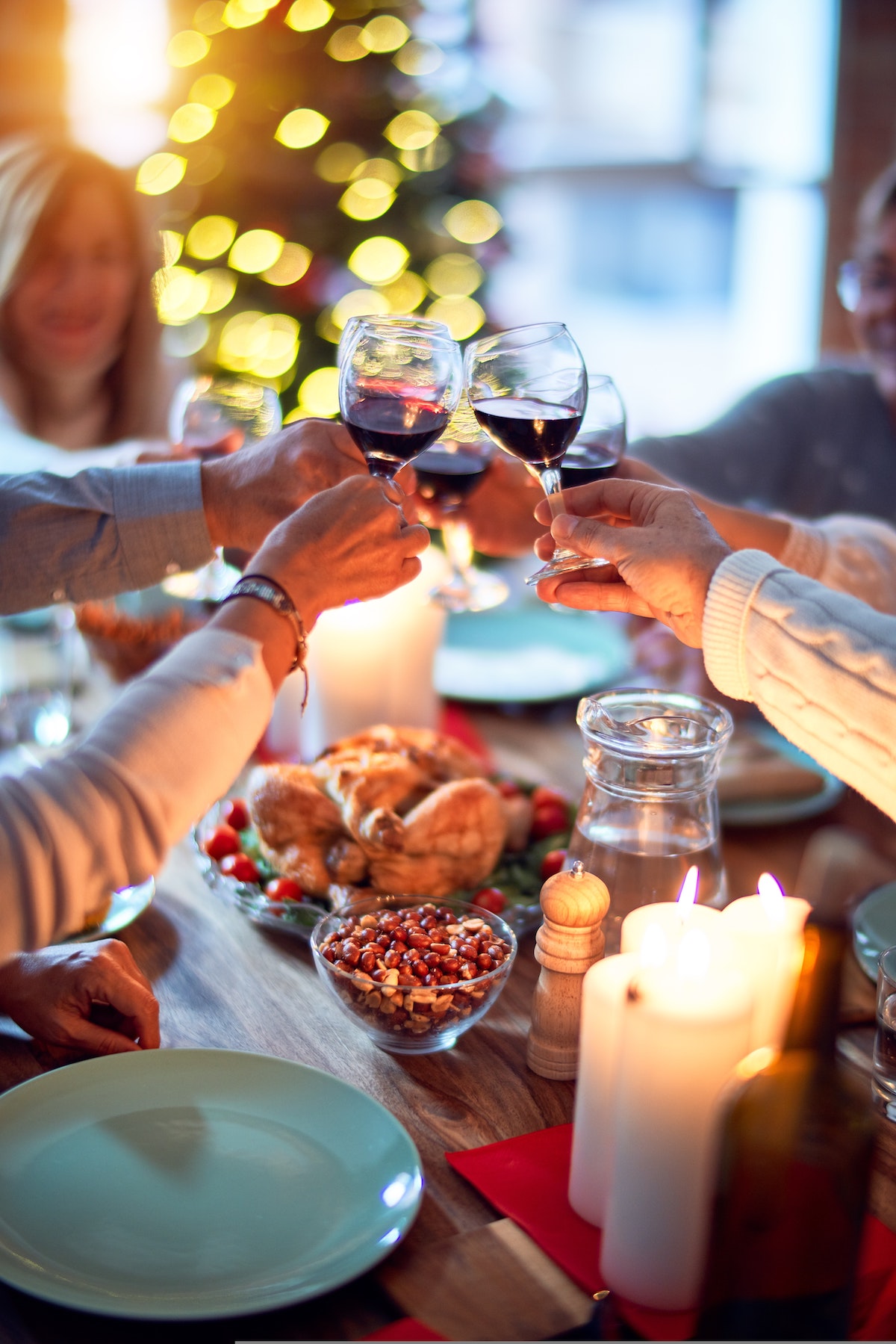
Christmas Day & New Year’s Day Lunch
No matter how much you eat on December 24 and 31, be sure to save room for yet another massive meal the next day! Christmas and New Year’s Day return once again to the Spanish tradition of long, leisurely lunches.
Some of the dishes may be prepared with leftovers from the night before, but not always. No matter what’s on the table, it’s clear that gathering together over food is one of the most cherished Spanish Christmas traditions.
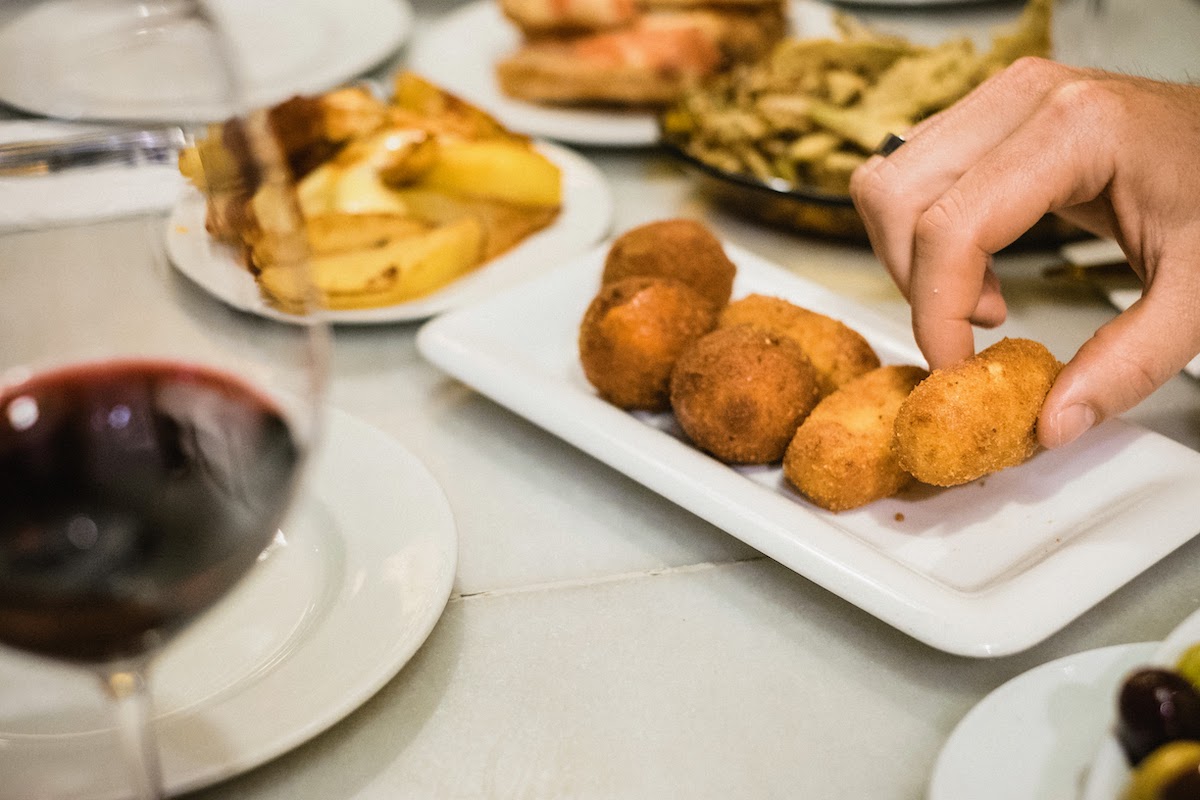
Día de los Inocentes
If you’ll be in Spain between Christmas and New Year’s, be sure to watch your back! Spain’s version of April Fools Day falls on December 28.
Spaniards call this El Día de los Inocentes (the Day of the Innocents). Pranks are generally quite harmless. When someone has fallen for one of the practical jokes, the person responsible will let them know with a cry of “¡Inocente!“
Grapes on New Year’s Eve
Starting the new year by immediately shoving 12 grapes into your mouth in rapid succession is something so very Spanish.
Legend says that eating one grape for each stroke of the clock at midnight on January 1 will bring good luck in the new year. Join in on the fun by heading to one of the large public gatherings that take place in most cities (such as at Puerta del Sol in Madrid or Plaza Nueva in Seville) to eat your grapes and welcome the new year with locals.
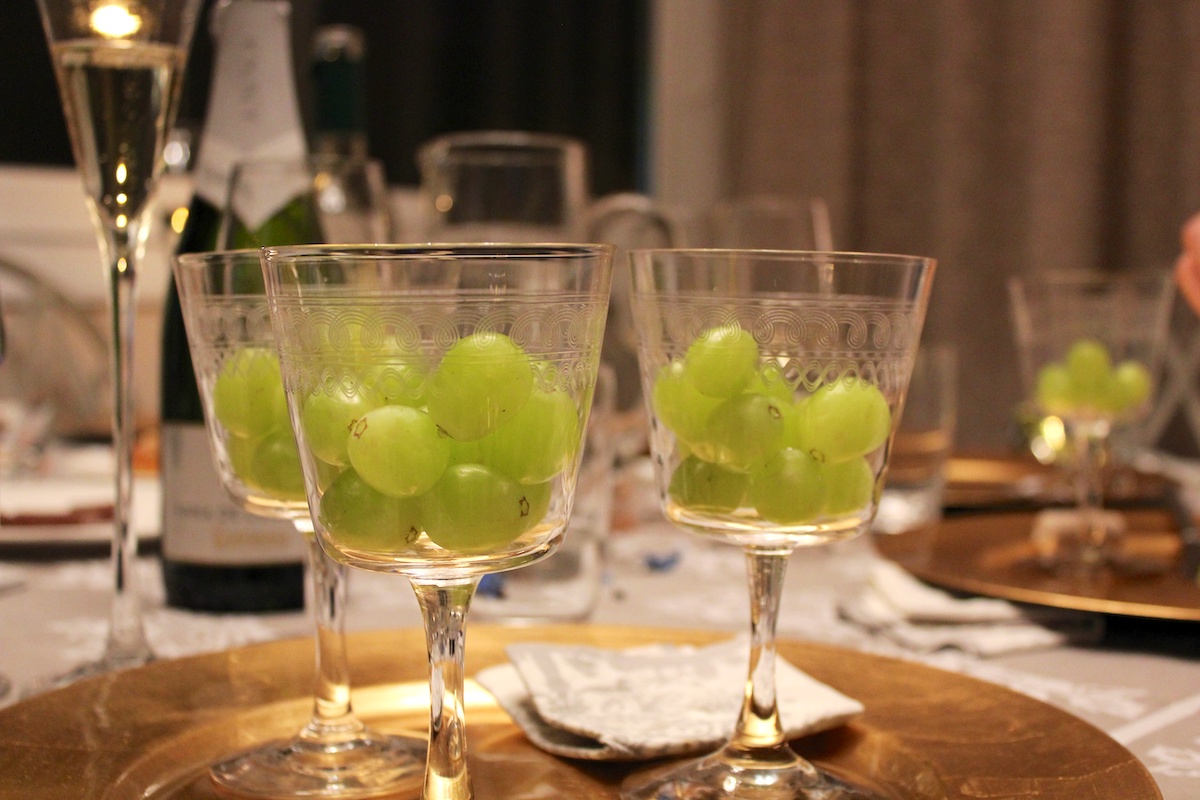
Cava
If there’s one drink that’s present throughout the entire Christmas season in Spain, it’s cava. The most famous Spanish sparkling wine makes an appearance at Christmas Eve dinner, New Year’s Eve countdowns, and so much more.
As a close relative of Champagne, cava makes a great addition to any festive event. However, it’s also quite unfussy compared to its famous French cousin, which means you can find excellent quality bottles for very fair prices.
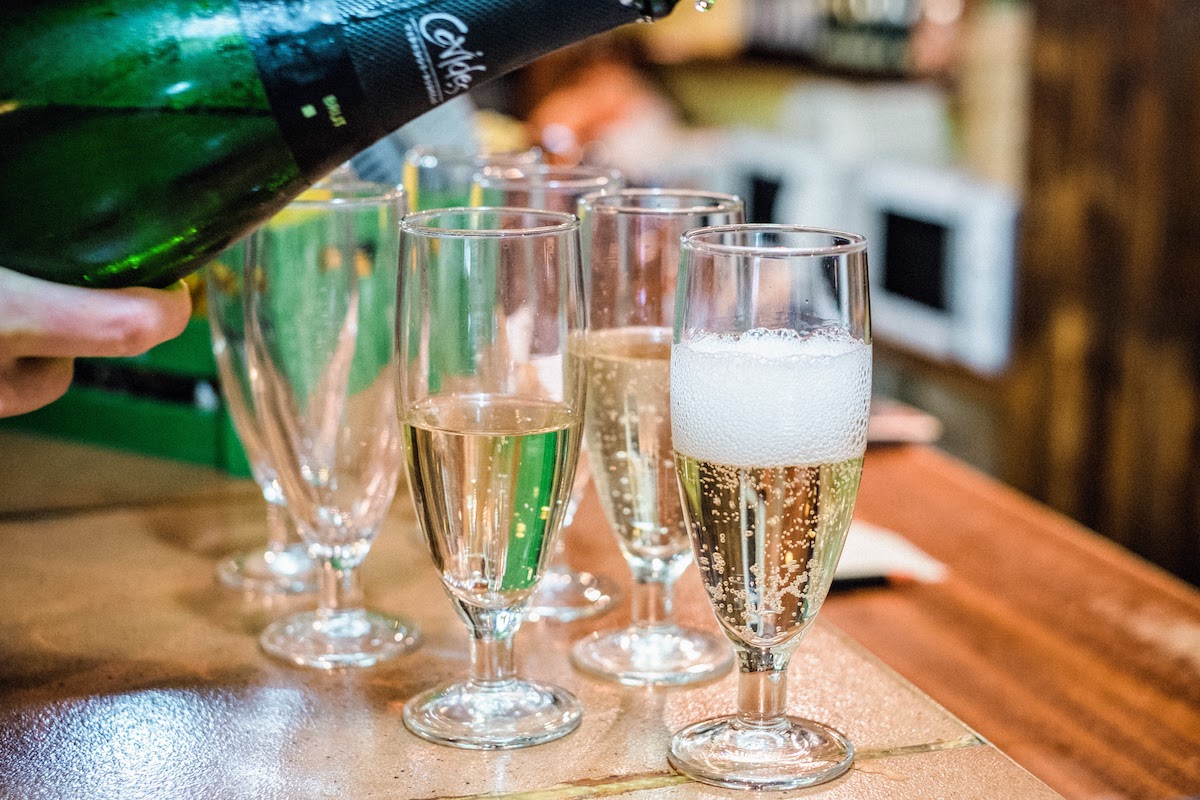
Three Kings Parade (Cabalgata de Reyes)
Who brings presents during the holiday season? If you’re about to say Santa Claus, think again—here in Spain, the beloved gift-givers are actually the biblical Three Kings (reyes magos)!
The fun starts on January 5 as the kings make their way throughout the city in a special parade known as the cabalgata de reyes. Children and adults alike love having the opportunity to greet the kings as they arrive in town.
Make your way to the parade and enjoy one of the most beloved Spanish Christmas traditions! (Just watch out for the flying candy—it can get quite intense!)
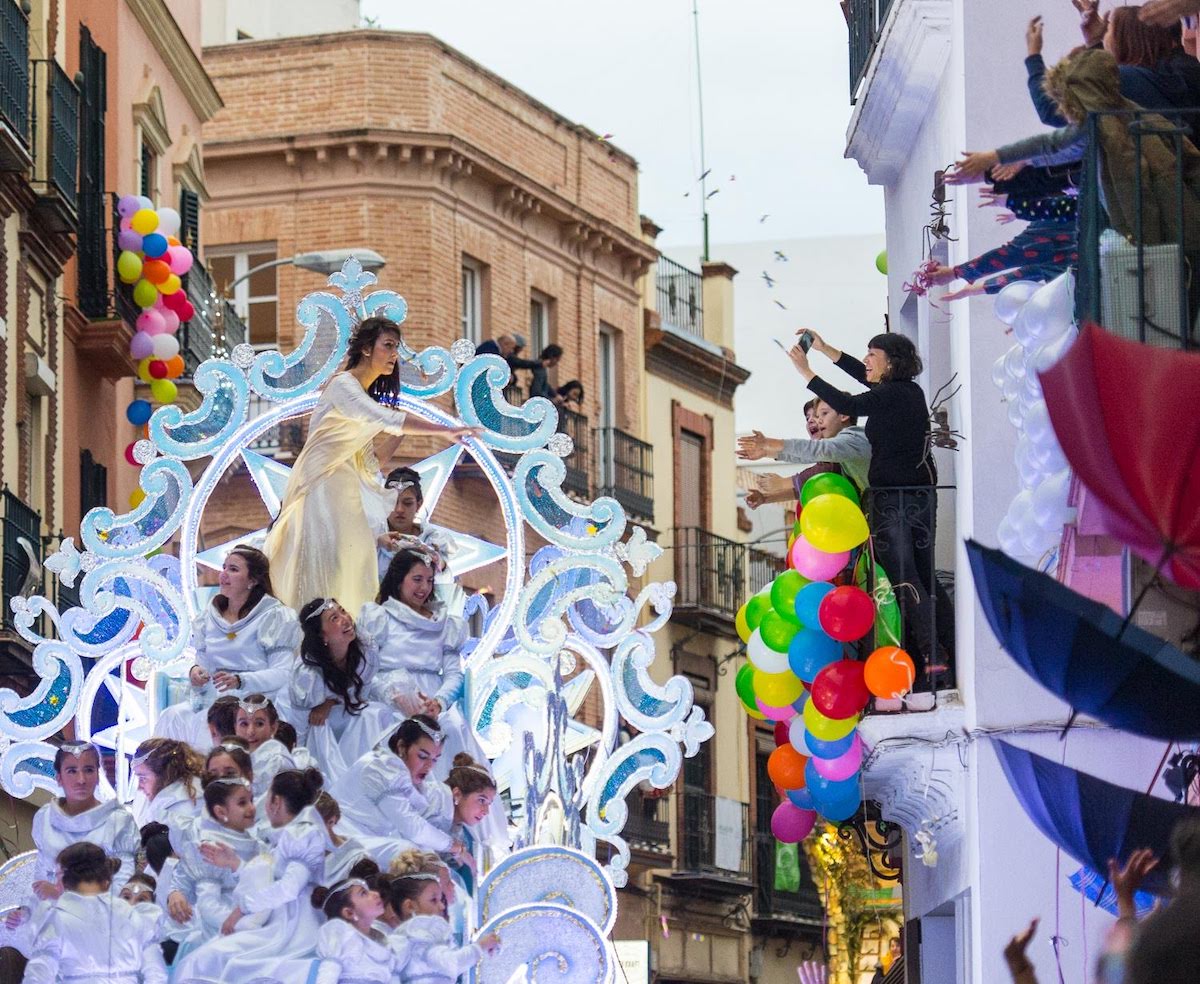
Three Kings Day
On the morning of January 6, children across the country wake up eager to see what gifts await them. While some families are starting to welcome the Santa Claus tradition as well, the Three Kings are the most beloved gift-bringers of the holiday season in Spain.
Three Kings Day, or el día de los Reyes Magos, commemorates the visit of the Three Wise Men to visit the newborn baby Jesus in the Christian tradition. Today, legend says that the three kings visit Spanish children’s homes on the eve of the Epiphany, leaving wonderful gifts under the Christmas tree or in their shoes.
Roscón de Reyes
You may be noticing a theme here—many of the most cherished Spanish Christmas traditions have to do with food. And Three Kings Day is no different!
The winter holiday season in Spain ends on a delicious note with the traditional cake associated with the Epiphany: roscón de reyes. This ring-shaped treat is a sweetened bread (similar to a brioche), often filled with cream and decorated with candied fruit to look like a bejeweled crown.
Some families dig into the roscón after watching the parade on January 5; others wait until the big day itself to enjoy this typical treat. No matter when you choose to enjoy it, the holidays in Spain wouldn’t be complete without roscón!
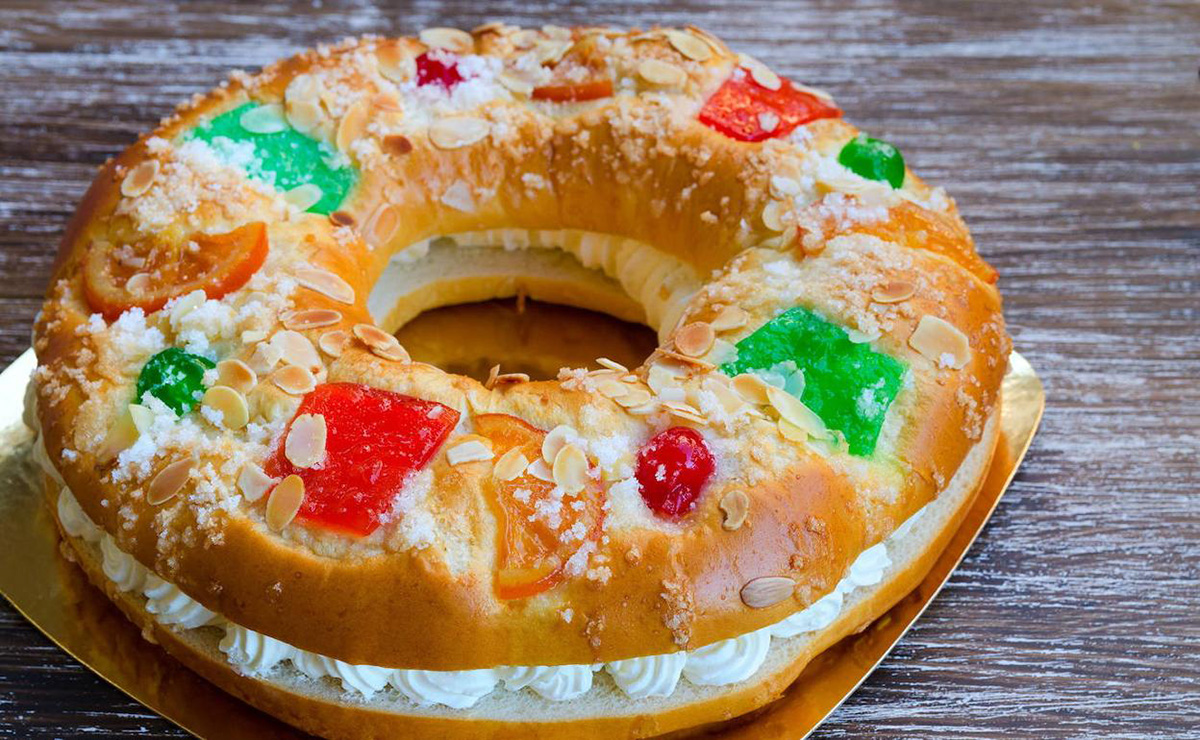
Holiday Traditions in Madrid
Don’t feel like walking around in the cold, but still want to see the lights? Hop on board the Navibus, a special bus that makes its way through the streets most evenings throughout December in Madrid.
You’ll be able to see all the best views of the lights from the comfy, warm double-decker bus. There’s even a live show that goes on throughout the trip, so you’ll have plenty of entertainment! We recommend reserving your tickets online for this beloved Madrid Christmas tradition.
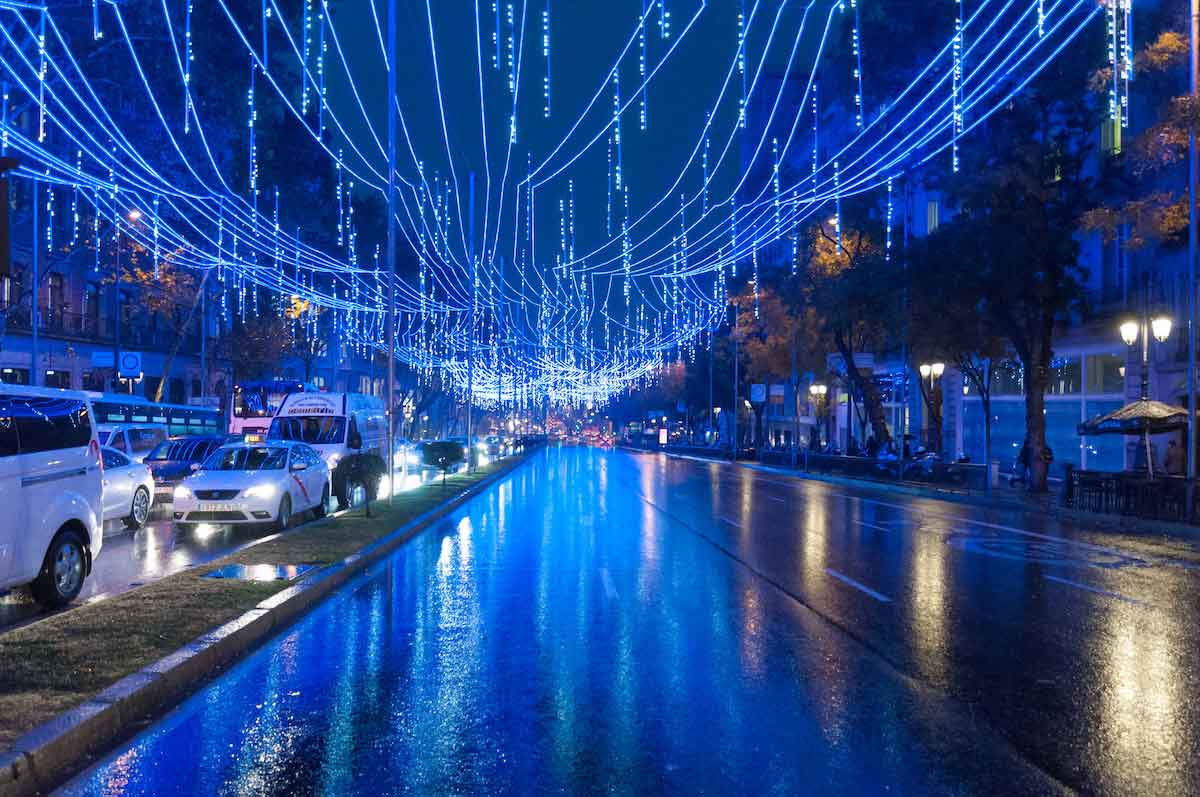
“Pre-Uvas” in Puerta del Sol
Have other plans for New Year’s Eve, but still want to see what all the fuss is about in Puerta del Sol? Head to the iconic plaza on December 30 for a dress rehearsal known as the pre-uvas (literally, “pre-grapes”).
24 hours before the event itself, hundreds of people pack into the square to practice. The only difference is that many people will actually be eating 12 M&Ms rather than grapes (legend says that eating the 12 grapes before the new year itself is bad luck!).
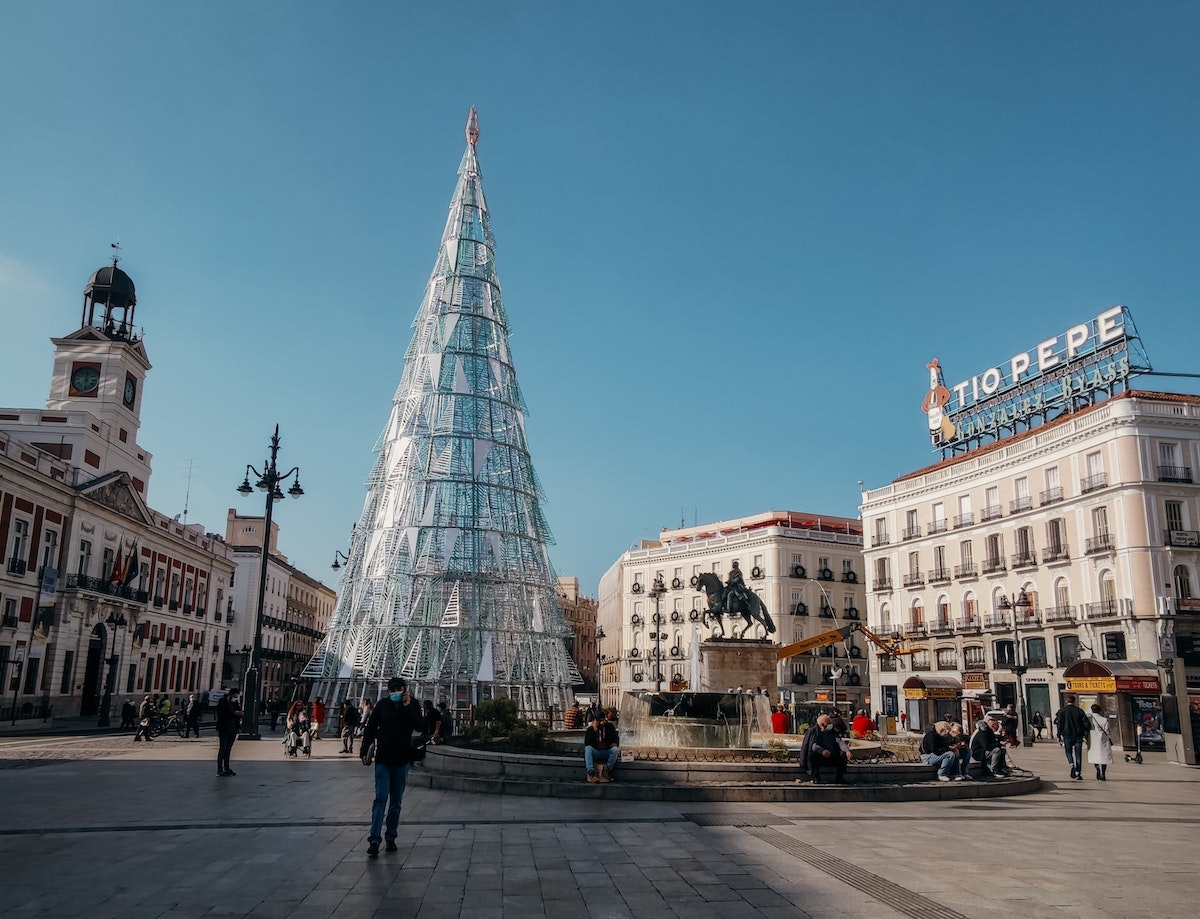
17. New Year’s Eve in Puerta del Sol
As night falls on December 31, hundreds of eager spectators pack into Puerta del Sol, this time with their 12 grapes in hand. This is the place to be on New Year’s Eve in Madrid if you want to be a part of Spain’s most classic and beloved celebration.
As midnight creeps near, all eyes will be on the clock atop the famed Casa de Correos building on the southern edge of the square. When the clock begins its 12 chimes, it’s the moment of truth! Can you manage to eat all dozen grapes in time with the clock?
Holiday Traditions in Catalonia
Caganers
You already know that nativity scenes truly get taken to the next level here in Spain. In Catalonia, however, you’ll often see a figure that doesn’t appear in the biblical version of the story: the caganer.
This little figurine depicts a person dropping their pants and relieving themselves in the middle of Bethlehem. In the past, caganers were nondescript figures representing random villagers, but today anyone in the public eye is fair game.
As you browse the stalls at a Christmas market, keep your eyes peeled for these hilarious little figures and see how many celebs you can recognize.
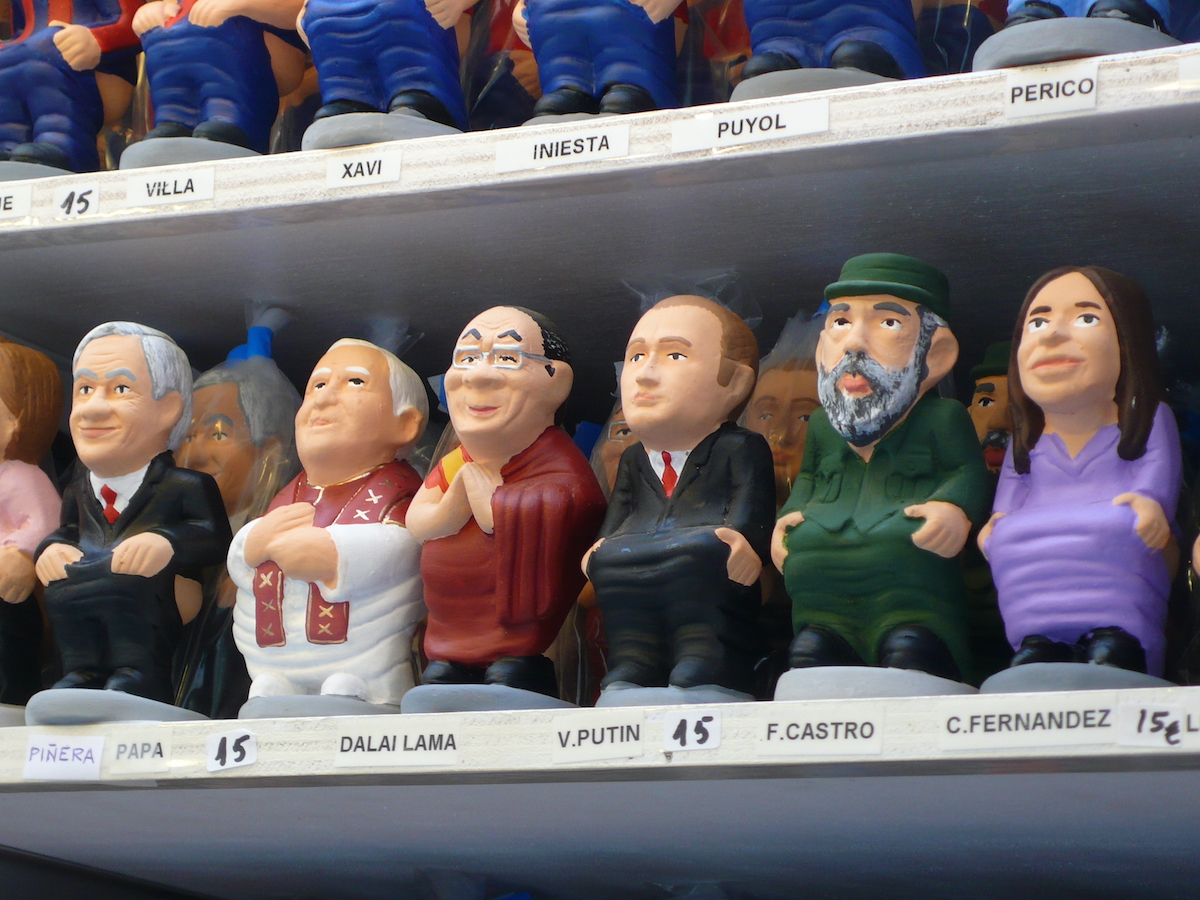
Tió de Nadal
As if one pooping holiday character wasn’t enough, Catalonia also has the tió de nadal!
This smiling figure, whose name translates to Christmas Log, becomes part of the family during the holiday season. In the weeks leading up to Christmas, Catalan families “feed” the log little treats every day, and cover it with a blanket each night to keep it warm. On Christmas Eve, children beat the log with sticks to help it poop out presents.
Instead of individual presents, tió de nadal usually poops out small treats, like nuts and candies, that are meant to be shared by everyone.
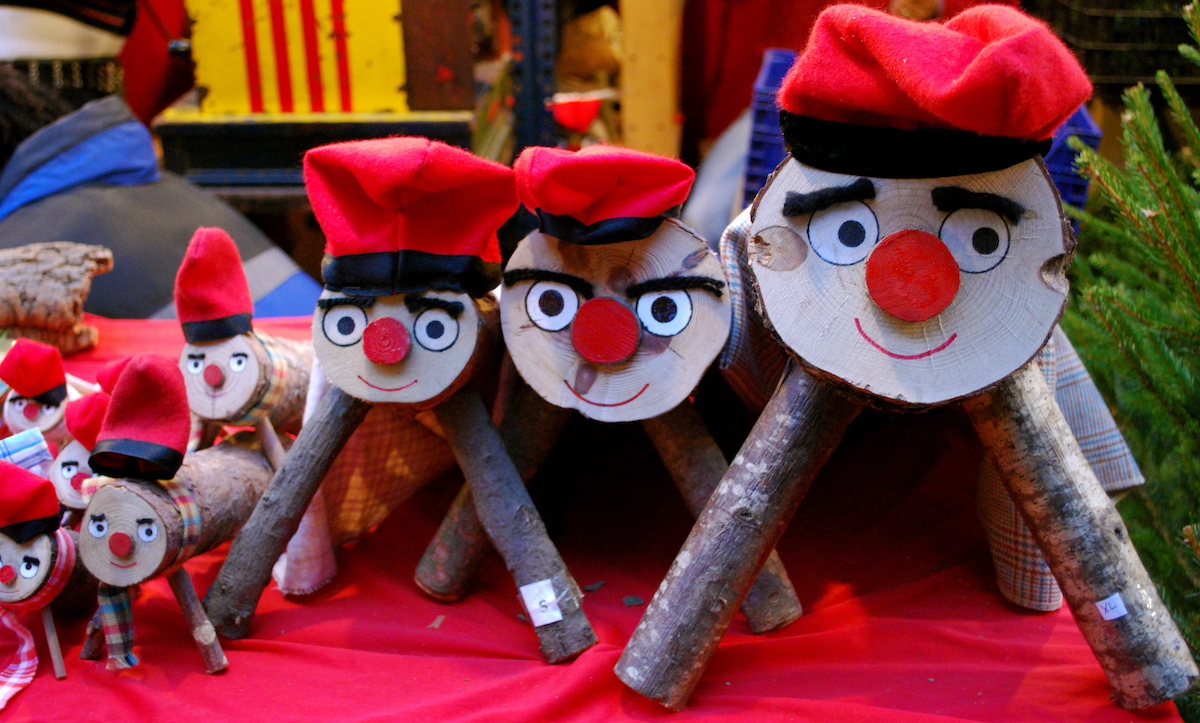
St. Stephen’s Day
In addition to the festive meals on Christmas Eve and Christmas Day, Catalan families gather to enjoy another delicious feast on December 26. This is the feast day of St. Stephen, known as Sant Esteve in Catalan.
This additional celebration has its roots in the Middle Ages, when many Catalans found it difficult to make the long journey home after gathering with their families for Christmas. Because December 26 had always been observed as a holiday on the Catalan calendar anyway, people simply decided to take advantage of the extra day to enjoy more time with their families and then make the trip home.
Many restaurants in Barcelona are open that day, so stop in and enjoy typical festive dishes like Catalan canelones and rich, hearty stews.
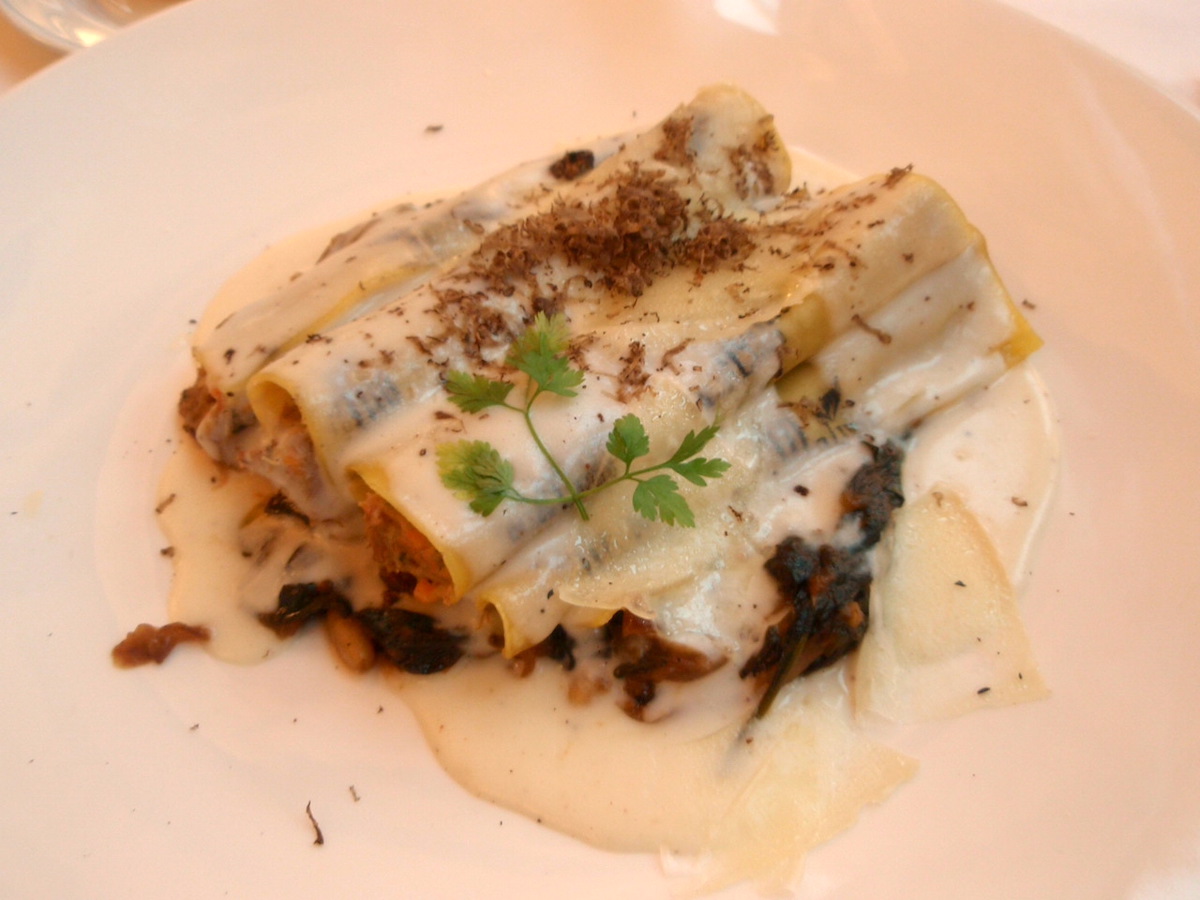
Primer Bany de l’Any (Barcelona)
This unique New Year’s tradition involves going for a swim. (In January. In the Northern Hemisphere.)
Though not for the faint of heart, Barcelona’s local tradition known as Primer Bany de l’Any (“First Swim of the Year”) is a fun and unique way to welcome the new year. Those who are up to the challenge gather at Sant Sebastià Beach at noon on January 1 for a quick dip in the chilly water. A hot meal awaits participants when they’re done.
Holiday Traditions in Andalusia
Feria del Belen (Seville)
An entire Christmas market dedicated to nothing but nativity scene figures? Only in Seville!
The Feria del Belén takes over Avenida de la Constitución every year starting in mid-November and lasting until just before Christmas. Browse the handmade figurines at the stalls and you’ll find hundreds of unique additions to your nativity scene that you never knew you needed.
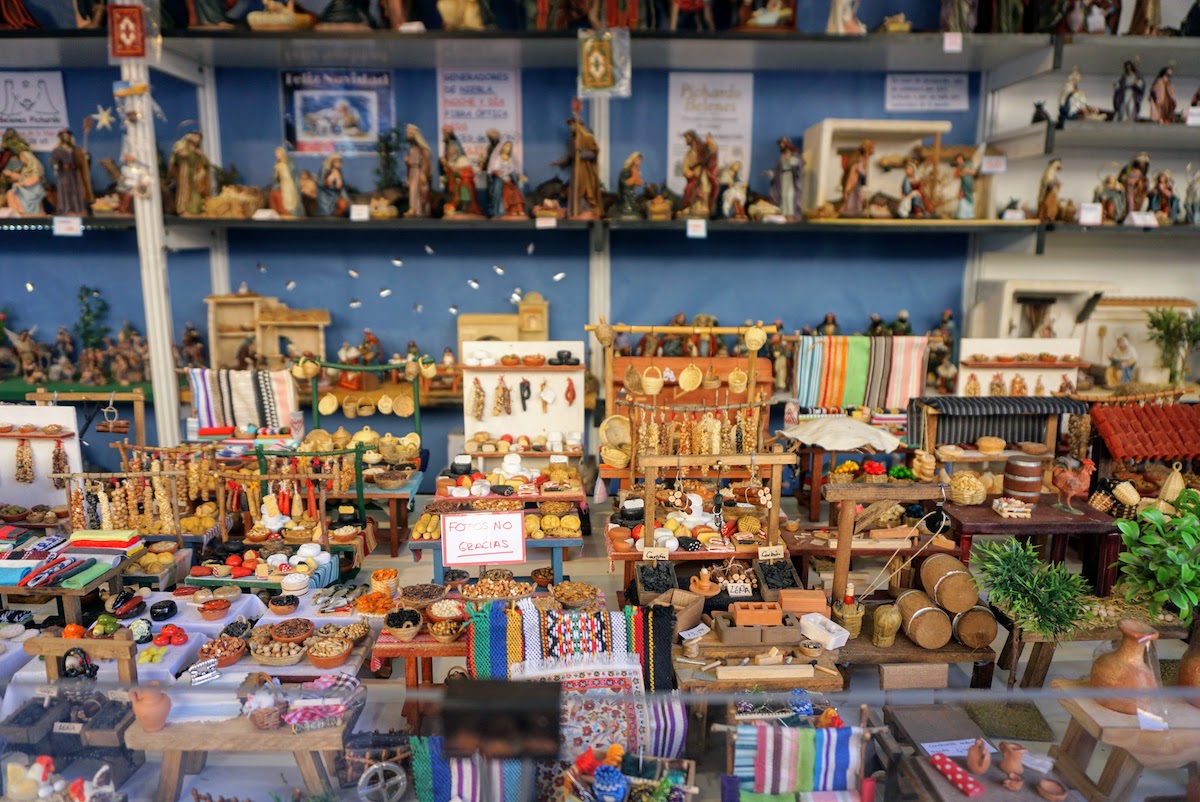
El Arrastre (Cádiz)
In the beachside city of Cádiz, Spanish children take part in El Arrastre (The Drag) on January 5, the day before the Three Kings are due to stop by.
Kids take empty cans and string them along a piece of rope. They then drag the cans around, making as much noise as possible. This custom is meant to call the attention of the Three Kings so that they remember to leave the children presents that night!
Holiday Traditions in the Basque Country
St. Thomas’ Day
One of our all-time favorite Spanish Christmas traditions is completely unique to San Sebastian.
On the feast of St. Thomas, December 21, the entire city transforms into a traditional farmers’ market. Streets and plazas throughout town will be lined with stands selling fresh produce and tasty Basque delicacies, especially txistorra (a local sausage similar to chorizo). Just don’t forget to wash it down with plenty of cider.
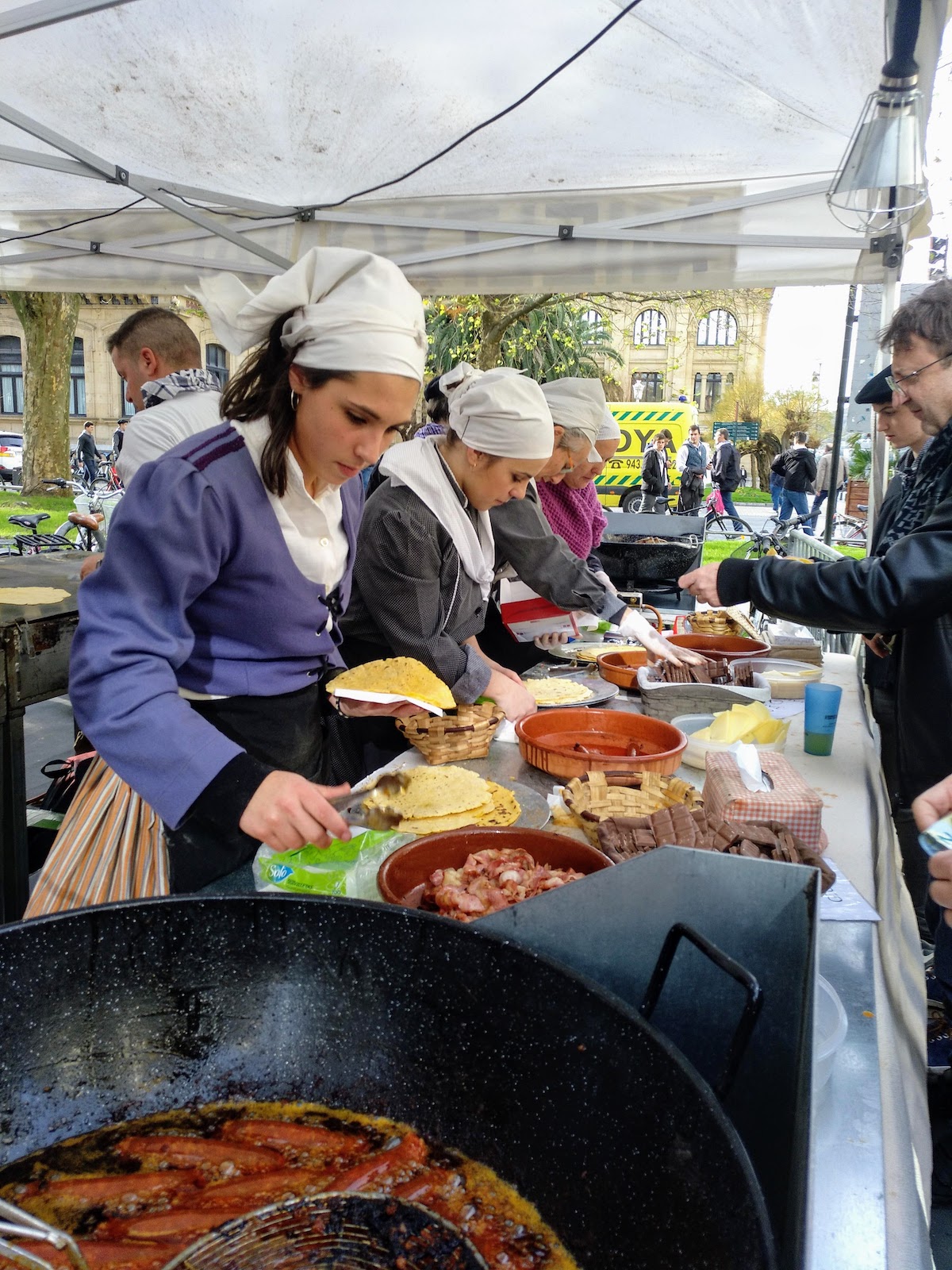
Olentzero
All Spanish children believe the Three Kings will bring their presents on the eve of January 6, but the Basque Country has an extra gift-giving figure who visits on Christmas Eve.
Olentzero is often depicted as a jolly peasant, wearing farmer’s clothing and smoking a pipe, and is usually accompanied by his wife Mari Domingi. On December 24, Basque children go to say hello to Olentzero and Mari Domingi and tell them what gifts they want. He visits families’ houses that night to leave gifts, and only asks for some food and alcohol in return!
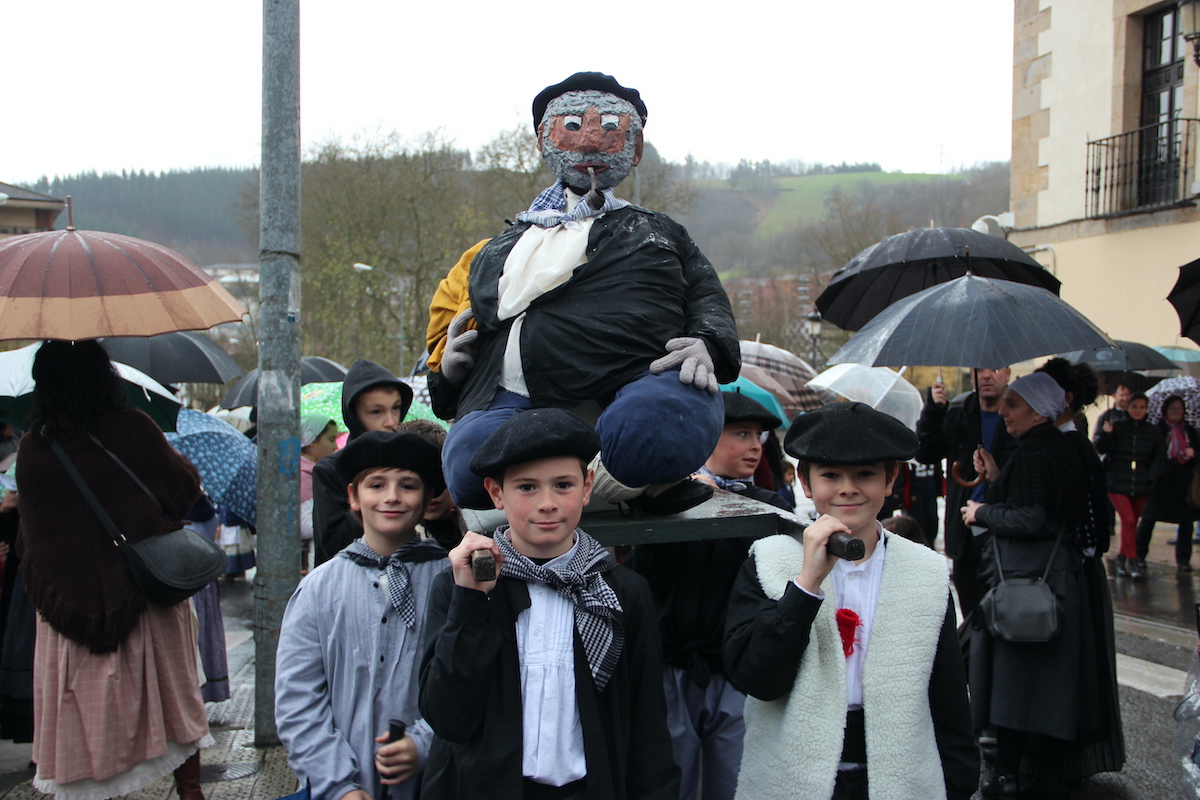
FAQs about Spanish Christmas Traditions
Can I explore these festive traditions on a Devour Tours food walk?
Yes. Devour Tours offers festive food walks that highlight Christmas treats, local customs, and seasonal markets.
Which food tastings should I expect when visiting Spain at Christmas?
When visiting Spain, expect turrón, polvorones, roscones, Iberian ham, cheeses, seafood dishes, and hearty winter stews.
Is the timing of Spain’s “Three Kings Day” important for travellers?
Yes. Celebrated on January 6, it includes large parades on the evening of January 5. Many shops and some restaurants may close on the holiday.
Can I join a walking tour in the cold December evenings when Christmas lights are on?
Yes. Evening tours run throughout December and let you enjoy illuminated streets, warm drinks, and festive tastings.
Are drinks included during the festive tastings on Spain tours?
Yes. Many include wine, vermouth, or hot chocolate to pair with seasonal treats.
What are some of the most unusual Spanish Christmas traditions?
Highlights include Catalonia’s Caga Tió (a gift-giving log) and quirky nativity figures like the caganer, showing Spain’s playful holiday spirit.
What foods are traditionally eaten in Spain at Christmas?
Seafood, roast lamb, jamón ibérico, turrón, and polvorones are common, often enjoyed during long family meals.
How do Spaniards celebrate Three Kings Day?
Parades fill the streets on January 5, and families eat roscón de Reyes on January 6 as children open gifts.
What drinks are typically enjoyed during Spain’s festive season?
Spaniards enjoy cava, vermouth, sweet liqueurs like anís, and rich hot chocolate often paired with churros.

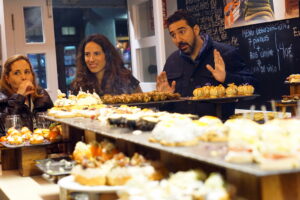
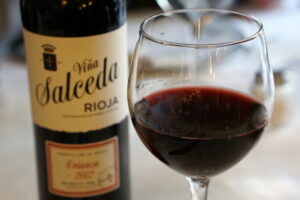






In Italy we wait for “la befana”, a good witch to bring presents the night of January 5th. I’m not sure exactly the legend behind it – there are a few different versions but it’s kind of fun to get presents Christmas Day and after 🙂